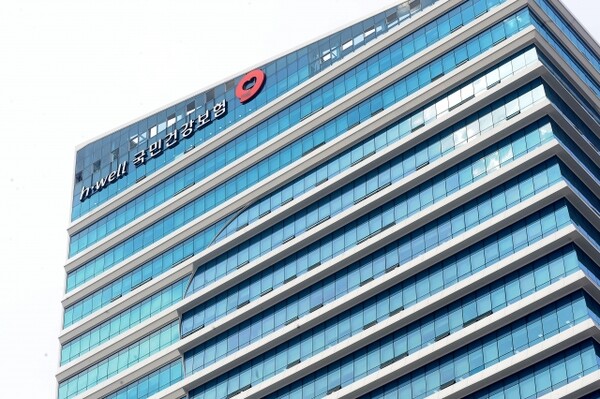The National Health Insurance Service (NHIS) recorded a current account surplus of nearly 3.63 trillion won ($2.79 billion) last year.
According to the health insurance financial status by cash flow for 2022 unveiled by NHIS Tuesday, the health insurance fund increased by 3.6291 trillion won last year to an accumulated total of 23.87 trillion won.
Compared to 2021, revenue grew 10.3 percent to 8.28 trillion won, and payment rose 9.6 percent to 7.47 trillion won. The revenue growth more than offset the increase in spending to improve its bottom lines.

The NHIS reshuffled its imposition of insurance premiums to a two-stage system, reducing the burdens on district subscribers. Still, overall income rise and economic growth worked to push the revenue, the state insurance agency said while explaining the reasons for its revenue increase.
Notably, the continuous rise in fully employed workers increased company subscribers by 0.5 percentage points from 2021. Economic growth and an increase in nominal income raised workplace wage payments by 2.9 percentage points. Company workers’ payment of insurance premiums rose by 1.2 trillion won after undergoing year-end settlement.
In addition, the agency strengthened the collection of overdue premiums, pushing the collection rate from district subscribers by 2.2 percentage points.
The payment growth was highest in the last three years. The Covid-19 pandemic reduced the use of healthcare services to pull down payments. However, the use of medical services was recovered last year to increase payment slightly.
According to NHIS, the payment increase rate plunged from 13.9 percent in 2019 to 4.1 percent in 2020 but rebounded to 5.3 percent in 2021 and 9.6 percent last year.
Notably, reimbursement for mild diseases, including breathing troubles, rebounded from a decline in the early stage of Covid-19.
Minor ailment reimbursement fell from 12.9 trillion won in 2019 to 12.2 trillion won in 2020 but increased to 14.5 trillion won in 2022. Respiratory disease payment dropped from 4 trillion won in 2019 to 2.9 trillion won in 2020, and 2.4 trillion won in 2021 before rising back to 3.6 trillion won last year.
Payments to neighborhood clinics relying heavily on outpatients received 12 trillion in reimbursement, as payments for outpatients increased by 16.2 percent from 10.9 trillion won.
The spread of the Omicron subvariant in the first half of last year sharply expanded support for Covid-19 diagnosis and treatment at neighborhood clinics. Because of the medical fee increase compared to 2021, total payment increased by 1 trillion won. Expanded reimbursement for pregnancy- and childbirth-related medical treatment and the increase in the number of people receiving health checkups also resulted in an 8.3 percent growth in the total payment.
To cope with Covid-19, NHIS supported the entire treatment and quarantine process, including diagnosis costs of rapid antigen and polymerase chain reaction (PCR) tests, quarantining and at-home treatment costs, and the money needed for managing integrated isolation.
In addition, the agency has developed ways to improve its financial health by making payments more efficiently to cope with financial uncertainty, according to NHIS.
The state health insurance service also plans to tighten its financial management in keeping with the government’s plan to enhance its sustainability while expanding support for essential care.
“To sustain and develop health insurance system, NHIS will strengthen its role as the insurer and secure financial soundness and transparency to operate the system stably,” it said.

